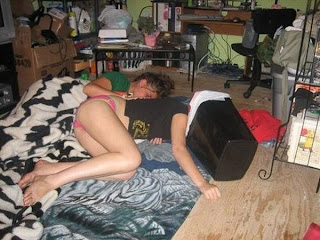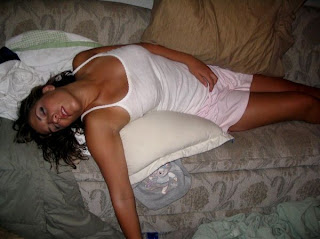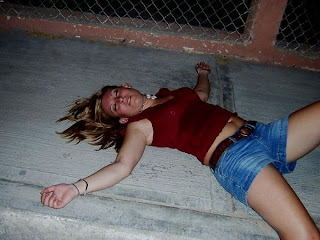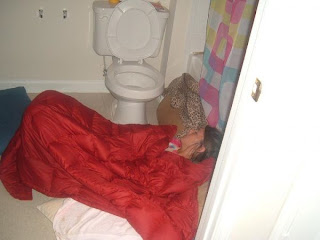The Nevert Tiring Tata co plans infrastructure, real estate project worth Rs 20k cr
Tata Realty and Infrastructure Ltd (TRIL) on Wednesday announced plans to
develop real estate and infrastructure projects, worth Rs
20,000 crore, over the next
three years.
In Mumbai, it is set to bid for the second phase of the 36-km Metro rail - Charkop to Mankhurd via Bandra - in partnership with Mitsubishi, the monorail project as well as the proposed Navi Mumbai airport, said TRIL managing director and CEO Sanjay Ubale.
Ubale said at a news meet that TRIL would also submit bids for the Navi Mumbai railway redevelopment project, the trans-harbour link between Sewri and Nhava and invest Rs 11,000 crore in real estate, including SEZs and mixed development plans across the country. Other investments will include Rs 5,000-crore on roads and Rs 4,000 crore on other infrastructure projects.
The infrastructure company also plans to redevelop bus terminals in tier-2 cities and set up warehousing facilities across the country. On the real estate front, TRIL is currently developing a state-of-the-art 25-acre IT/ITES SEZ in Chennai. The project, costing about Rs 3,800 crore, will also house an international convention centre, the first of its kind in that city.
Two other IT SEZs are coming up in Ahmedabad and Hinjewadi in Pune. In Amritsar, the firm has started developing a 7 lakh sq-ft retail complex. In Gurgaon, it is evaluating a residential and mixed used development on a 35- acre plot for the middle income group.
Ubale said land parcels of Tata group companies in and around Mumbai would be unlocked for development purposes.Hit hard by the slowdown, real estate players are now going innovative and trying to partner with the government to beat the low demand. Markets cheer election results
Sectors and stocks to look out for
Pick stocks on fundamentals
Five facts on stock falls
Short-term plans are safe bets
Real estate players are looking to tap the 4.33 lakh people, who were not allotted houses in the MHADA scheme and have approached the government with a proposal where they can cater to these potential buyers.
The Builders’ Association of India (BAI), which includes 10,000 real estate players throughout India, has written to the chief minister of Maharashtra requesting him to appoint MHADA and CIDCO as the nodal agencies for carrying out projects under the controversial Slum Rehabilitation Authority (SRA) scheme. Only 3,683 of the 4.33 lakh applicants were allotted houses in the random selection on Tuesday.
In a letter, a copy of which is with ET, BAI asked for MHADA and CIDCO to be appointed as the “official agency for development” for executing SRA projects. “These agencies could offer free rehabilitation component houses to slum dwellers by constructing multi-storied building as already provided in the SRA,” the letter added.
“While, on one hand, there is a low demand due to the slowdown, there are over four lakh buyers, who are willing to shell money to buy houses,” said Anand J Gupta, general secretary, BAI.
Under the BAI proposal, the government and the real estate players can come together and form a JV and accommodate these potential buyers. If the proposal is accepted, it is believed that the real estate players, who are going through quite a rough patch for a while now, would tend to benefit.
Stir at Gole Mkt over eviction plan
On Wednesday, shopkeepers of Gole Market protested the move to evict them. They claimed they had not been provided with alternative space to shift. The shop owners have demanded that alternative space be provided to them which were similar in size and of same rent as the ones leased out to them in Gole Market. Some of the well known establishments in the area are Galina Restaurant, Gujarat Fishery and Sagar Restaurant.
"Gole market is a heritage building and we want to restore it. Hence no commercial activity can be allowed there. Even the traffic department has said a market there disturbs traffic circulation besides adding to nuisance value for local residents. We might build a small museum there in the future but giving the market back to the traders is out of question. The traders want a new site at the same rate which is not possible. We have already taken possession of eight shops,'' said a senior NDMC official.
Said Narayan Shamnani, president of Gole Market Merchant Association: "NDMC had promised to rehabilitate us elsewhere. But now they are asking us to vacate without providing us with alternative space. We will not accept this. We have been functioning from Gole Market for over 60 years now. If need be we will organise a protest march at Jantar Mantar on Thursday.''
He added: "In reply to an RTI filed by us, NDMC in 2006 had said it was not dislocating us but proposing to shift each shopkeeper to a vacant plot available in the complex for a period of 54 weeks. Afterwards, we were given alternative spaces to shift out in. But the sizes of shops were so small and these shops were allocated in areas like a subway in Palika Bazaar or Sarojini Nagar, where it is impossible to open up restaurants or meat shops. When we did not accept their alternative, they sealed four shops.''
Traders in Gole Market pay anything between Rs 200 and Rs 2000 as rent for prime rental property. Said Raj Kishore Bansal, who owns Royal Store: "My family has been functioning from here since 1937. We can't just be expected to vacate and leave."
Due to the dilapidated state of Gole Market, the building had been declared dangerous. One of Delhi's oldest surviving colonial markets, it was constructed in 1912 and unauthorised construction along with lack of proper maintenance had led to part of the heritage beauty of the building being destroyed, said NDMC officials.
Apart from facade restoration, NDMC is also planning interior restoration and upgradation of the surrounding structure. The project cost which was initially estimated at about Rs. 6.31 crore has now escalated to about Rs 8.53 crore
ndia's realtors believe the sector will see signs of recovery in the next three months, according to the Associated Chambers of Commerce and Industry of India (Assocham).
A survey report by the industry lobby said 88 percent of chief executives of real estate firms see a quick revival within the next three months as developers shift towards affordable housing and property prices undergo significant correction.
The Assocham Business Barometer report is based on a survey of 25 real estate firms conducted between May 15 and May 25.
The survey report said a whopping 92 percent of chief executives considered affordable housing to kindle demand in the real estate sector, with about 84 percent saying this segment had been least impacted by falling demand.
It said while the luxury housing segment witnessed a demand contraction of over 50 percent, special economic zones (SEZs) by about 40-50 percent, retail space between 30-40 percent and commercial space by 20-30 percent, affordable housing was the most resilient segment seeing a contraction of 10 percent or less.
The chief executives called for sought single-window clearances for all schemes under affordable housing, as is done with SEZ proposals, to bridge the shortfall of about 2.6 crore dwelling units at the earliest.
About 76 percent of the respondents said the stimulus given to the sector through fiscal and monetary measures was inadequate.
Of all policy measures, 64 percent of respondents were of the view that the central bank's move to allow banks to restructure loans to developers has been the most successful in improving liquidity for the real estate sector.
Additionally, 60 percent said a resurgent stock market would be the most prominent source of finance for the sector, while 28 percent thought bank credit was the most viable option.
Hefty funds raised through the qualified institutional placement route in the stock market (exceeding Rs.8,000 crore) along with debt restructuring would allow the developers to address their liquidity concerns.
Mumbai has been ranked as the most saturated in terms of real estate assets followed by Delhi, Bangalore, Chennai, Kolkata and Hyderabad.
Drunk Indian Girls Pictures
Halloween Prostitue Parade
Recently, I was a student at Santa Barbara City College in beautiful Santa Barbara, California. One of the last classes I took there was a sociology course in which I was assigned to break a gender norm, then report the results of breaking that norm. I decided the gender norm I wanted to break was that of females dressing promiscuously during Halloween.
The students who attend the city college and the University of California, Santa Barbara (UCSB) give new meaning to the word “partying.” Many of them live in a small, isolated community bordering UCSB, called Isla Vista (IV). The area is famous for its constant parties, but especially its Halloween celebrations on the street hanging over the ocean cliffs, called Del Playa Drive. Ever since it was named the best Halloween party spot by Playboy, the celebration has gotten completely out of control. People run around naked, drunken students fall off balconies and into the ocean below, sexual acts take place in the streets, and the transmission of STDs is at an all-time high.
The Halloween festivities on Del Playa Drive would be better described as "The Prostitute Parade" because the procession of scantily clad women being mentally undressed by drunken male passersby is reminiscent of the red-light district. Essentially, it’s like a combination of Woodstock and New Orleans during Mardi Gras, complete with riot police on horseback.
Despite living in IV, I was never the typical crawl-home-in-the-gutter-half-naked every Thursday through Saturday night type of a resident. I kept to myself and fled the area during Halloween. However, this year my friend, Tiffany, was visiting me from San Francisco, and she was absolutely determined to partake in the event. Informing me a week prior to her visit of her proudly proclaimed "naughty costume," I was instructed to find an equally promiscuous outfit (or lack of outfit) to wear.
The students who attend the city college and the University of California, Santa Barbara (UCSB) give new meaning to the word “partying.” Many of them live in a small, isolated community bordering UCSB, called Isla Vista (IV). The area is famous for its constant parties, but especially its Halloween celebrations on the street hanging over the ocean cliffs, called Del Playa Drive. Ever since it was named the best Halloween party spot by Playboy, the celebration has gotten completely out of control. People run around naked, drunken students fall off balconies and into the ocean below, sexual acts take place in the streets, and the transmission of STDs is at an all-time high.
The Halloween festivities on Del Playa Drive would be better described as "The Prostitute Parade" because the procession of scantily clad women being mentally undressed by drunken male passersby is reminiscent of the red-light district. Essentially, it’s like a combination of Woodstock and New Orleans during Mardi Gras, complete with riot police on horseback.
Despite living in IV, I was never the typical crawl-home-in-the-gutter-half-naked every Thursday through Saturday night type of a resident. I kept to myself and fled the area during Halloween. However, this year my friend, Tiffany, was visiting me from San Francisco, and she was absolutely determined to partake in the event. Informing me a week prior to her visit of her proudly proclaimed "naughty costume," I was instructed to find an equally promiscuous outfit (or lack of outfit) to wear.
Deciding to have a little fun of my own, I set out to find a costume that would be the most disappointing and embarrassing to Tiffany - one that covered more than 5% of my body. While shopping, I felt my cynicism intensifying and eventually decided on a costume designed for males. It was a full, baggy jumpsuit of an escape convict. The female version of the costume was an extremely short dress, designed to allow minimal coverage of everything that should be covered. Extremely low-cut and very tight, not even the most talented convict could escape a prison yard in that getup.
While I don't walk around every day dressed like an Amish woman, I do believe some degree of decency is necessary. I simply don't support the female degradation that women bring upon themselves every Halloween. I’m sure Susan B. Anthony rolls in her grave as girls in playboy bunny outfits hop across it. Women before us have fought so hard for respect and yet we find the need to turn a holiday based on ghosts, goblins, and vampires, into a parade of people looking like strippers or themed prostitutes. There are sexually charged firefighters, naughty cops, promiscuous pirates, and loose ladybugs! That’s right, we’ve even made a BUG sexual.
Tiffany arrived and we prepared to venture out into the night. She changed into her costume, which was a naughty secretary outfit. When I revealed my baggy jumpsuit, Tiffany stood drop-jawed and proclaimed, "You can't go like THAT!" It was amusing that she was objecting so strongly to my outfit, yet I was not supposed to react similarly to her outfit, which consisted of nothing more than a lacy bra and mini-skirt. She said that I would embarrass her and even stated, "If you go dressed like that, people will think you're a lesbian!" I couldn't believe that having full coverage equated me to a lesbian. I simply smiled and informed her that yes, I was going as I was currently dressed, and that if she objected, she could go alone. She pouted, and I was triumphant.
As we paraded around IV surrounded by the horny, the desperate, and the scantily clad, Tiffany seemed upset. She had gotten over the fact that I was "dressed like a lesbian," but something else was bothering her. I asked her what was wrong and she exploded, "Why isn't anyone hitting on me? Am I ugly? Am I fat?" The pathetic stupidity of my fellow females never ceases to amaze me. Distraught over the fact that she wasn't being sexually assaulted at every turn, Tiffany began pulling down her bra and adjusting her skirt so that she was showing even more skin. Eventually, a guy made a grab at her, followed by a sexually explicit comment, and she brightened right up, giggled, and pranced onward. Personally, I wanted to knock some sense into her. I was perfectly content with everyone ignoring me.
While I don't walk around every day dressed like an Amish woman, I do believe some degree of decency is necessary. I simply don't support the female degradation that women bring upon themselves every Halloween. I’m sure Susan B. Anthony rolls in her grave as girls in playboy bunny outfits hop across it. Women before us have fought so hard for respect and yet we find the need to turn a holiday based on ghosts, goblins, and vampires, into a parade of people looking like strippers or themed prostitutes. There are sexually charged firefighters, naughty cops, promiscuous pirates, and loose ladybugs! That’s right, we’ve even made a BUG sexual.
Tiffany arrived and we prepared to venture out into the night. She changed into her costume, which was a naughty secretary outfit. When I revealed my baggy jumpsuit, Tiffany stood drop-jawed and proclaimed, "You can't go like THAT!" It was amusing that she was objecting so strongly to my outfit, yet I was not supposed to react similarly to her outfit, which consisted of nothing more than a lacy bra and mini-skirt. She said that I would embarrass her and even stated, "If you go dressed like that, people will think you're a lesbian!" I couldn't believe that having full coverage equated me to a lesbian. I simply smiled and informed her that yes, I was going as I was currently dressed, and that if she objected, she could go alone. She pouted, and I was triumphant.
As we paraded around IV surrounded by the horny, the desperate, and the scantily clad, Tiffany seemed upset. She had gotten over the fact that I was "dressed like a lesbian," but something else was bothering her. I asked her what was wrong and she exploded, "Why isn't anyone hitting on me? Am I ugly? Am I fat?" The pathetic stupidity of my fellow females never ceases to amaze me. Distraught over the fact that she wasn't being sexually assaulted at every turn, Tiffany began pulling down her bra and adjusting her skirt so that she was showing even more skin. Eventually, a guy made a grab at her, followed by a sexually explicit comment, and she brightened right up, giggled, and pranced onward. Personally, I wanted to knock some sense into her. I was perfectly content with everyone ignoring me.
By breaking the norm of dressing promiscuously on Halloween, I gained new respect for myself and lost even more respect for the women around me. I noticed the female “dress code” is enforced in several ways. Females dress like porn stars in the making, and those who do not want to dress in that fashion are teased, labeled lesbians, or are just generally ignored. Males enforce this behavior because, well, why wouldn't they? Their choice is between hundreds of half-naked girls running around with every drunken step threatening a much-anticipated wardrobe malfunction, or hundreds of fully clothed girls running around intoxicated. The difference is in buttons and zippers. For the drunken, horny, young male, his dishonorable intentions are made increasingly difficult to execute with each layer added between him and his goal.
If females want equal rights, they shouldn't demean themselves on Halloween for the enjoyment of the same men from whom they desire respect. The multitude of consequences that come from enforcing the gender norm of females dressing promiscuously on Halloween all add up to one general consequence: the systematic undoing of everything females have fought for.
Subscribe to:
Posts (Atom)























































